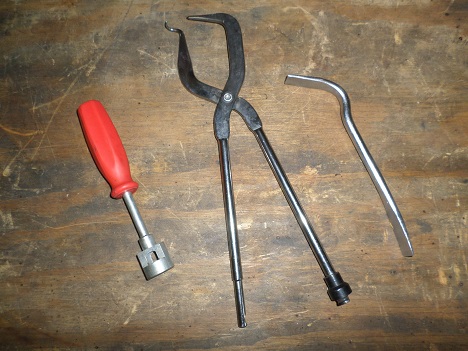How To Make Brake Lines
Article by Mark Trotta
On an old car or truck, the need for replacing metal brake lines is often due to rust, old age, or part of a disc brake upgrade.
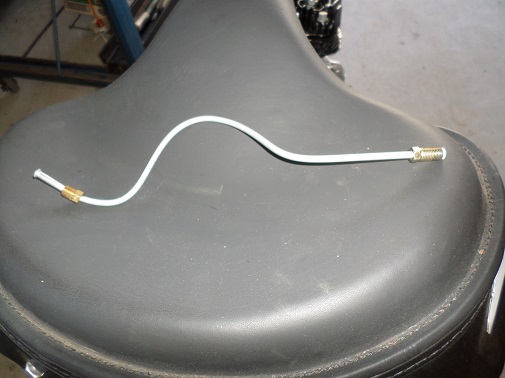
The procedure to fabricate brake lines requires a few specialty tools, attention to detail, and a little patience.
Automotive Brake Lines
Most automotive brake tubing is made of rolled steel. Over time, rust forms on both the inside and the outside, eventually leading to fluid leaks and brake failure.
Brake lines made for automotive use are manufactured from soft-steel sheets, coated with copper, and rolled over into a double-wall tube. They are then bonded at a high temperature and tin-plated to resist corrosion.
The two most common brake line diameter sizes are 3/16" and 1/4". Most auto parts stores sell straight brake lines in standard lengths of 8", 12", 20", 30", 40", 50, and 60". Sometimes you'll find it offered in a straight 72" line.
The steel lines found at auto parts stores have pre-made flares on each end with attached line nuts. The problem with these are, you'll rarely find them with the exact ends and in size that you need.
Some parts stores (like NAPA) offer steel tubing in 25-foot rolls. You can also order these from places like Amazon or Summit Racing. If you're buying a roll of tubing, you'll also need to buy line-nuts. Sometimes they come as a kit.
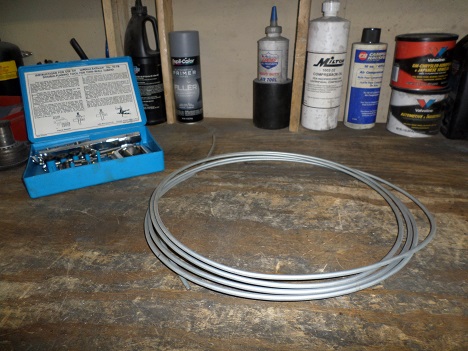
Shop: Steel Brake Line Kit 3/16"
Buying a roll of tubing is the least expensive way for repairing multiple lines. Unrolling the line is can be done by rolling the tubing out (across the floor is a good way), then straightening it as you need it.
Replacement lines are offered in steel, NiCopp, or stainless steel.
What Is NiCopp Tubing?
NiCopp (nickel copper) brake line is made from nickel copper alloy. It is 90% copper and 10% nickel, and also referred to as 90-10 copper. Because of it's make-up, it does not corrode like steel lines, and may likely outlast the vehicle it's installed in.
Steel vs NiCopp Brake Lines
NiCopp brake tubing is easier to bend and flare than steel brake line, but it is also easier to damage during installation. It is also more expensive.
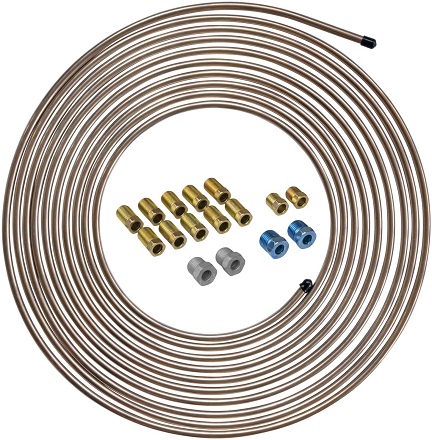
Shop: NiCopp Brake Line Kit, 1/4" x 25'
Shop: NiCopp Brake Line Kit, 3/16" x 25'
NiCopp meets international and U.S. requirements for brake tubing (SAE Standard J1047 and ISO 4038). It is factory-fitted to several European cars, such as Porsche, Volvo and others.
CAUTION: Never Use pure Copper tubing for automotive brake lines--it's too soft and prone to cracking.
Stainless Steel Brake Line
Stainless steel can be used for brake and fuel line, but it is more costly and more difficult to bend.
Ordinary steel line from the parts store will last for 20+ years, just like the original ones did. And if your car is garaged and only used in nice weather, they'll last even longer than that.
*************************
Brake Line Fittings
Look closely at the fittings on the end of your brake line--there are several different types and sizes. None of them are interchangeable, although adapters are made to fit one to another.
The most common brake line fitting is the SAE/double (inverted/45degree) flare. "Flare" refers to the end of the brake line tubing, and most American and some import cars use the SAE style.
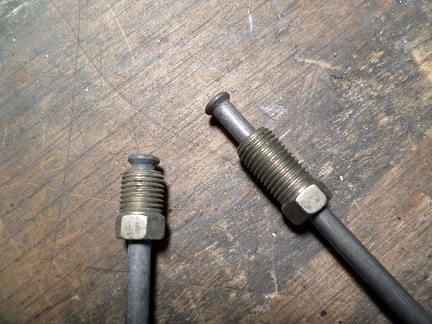
Picture above illustrates double flare, 45 degree brake lines.
Double Flare vs Single Flare
Be aware that a single flare is not strong enough to hold the pressure of a hydraulic automotive brake system. Fittings called AN (Army-Navy) require 37-degree single flares, but are completely different than automotive. To make a double flare end, the flare is folded above itself, creating a double and secure flare.
Bubble Flare Brake Lines
Many classic European cars, such as the Volkswagen Beetle, are equipped with "DIN-flare" or "bubble flare" brake line ends. These are also referred to as "Iso-flare".
On a DIN/ISO bubble flare, the brake line tube is compressed back onto itself with most of the excess material winding up on the forward side of the flare, and the back side is formed nearly into a right angle to the tube. Not all flaring tools can make these, so bubble flares are best formed using hydraulic flaring kits.
Most European car's brake line fittings are metric, and they are not all the same. While restoring my old Fiat Spider, I found the bubble-flared ends were an odd metric size (10mm x 1.25). The more common metric size is 10mm x 1.00.
Before you begin, make sure you have the proper size and style of brake line tubing and fittings.
*************************
Types Of Brake Line Flaring Tools
Making your own brake lines requires a few specialty tools, most importantly a flaring tool, of which there are several types. Keep in mind that all styles of flaring tools produce the same result.
Wing-Nut Style Flaring Tool
The simple wing-nut style double flaring tool is the most common. It mounts in a vice and requires several steps. They are sold in kits and include an assortment of dies to accommodate different size lines.
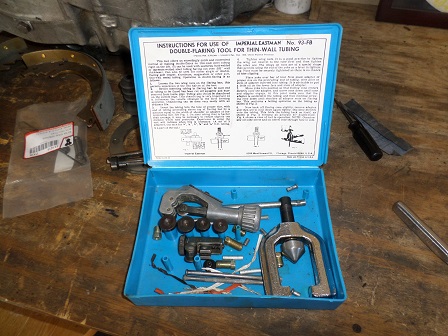
Shop: Flaring Tool Kit
Titan Flaring Tool
The Titan brake flaring tool is easy to use and leaves little room for error. It creates inverted 45-degree double flares without leaving crimp marks on the line. There is also a stop bolt that takes the guesswork out of measuring how much of line needs to stick out.
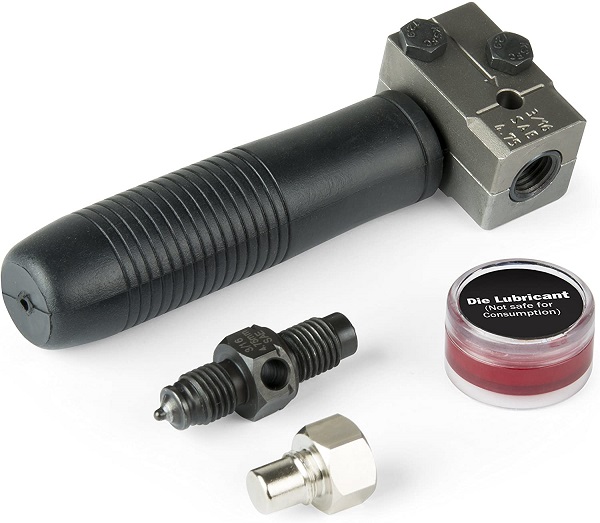
Shop: Titan 3/16-Inch Double Flaring Tool
This tool will allow you to repair lines while still on the vehicle, or the handle can be removed and can be mounted in a bench vise.
The downside of the Titan tool is that it's more expensive than the wing-nut type, and it only does one size line. If you need to make 1/4" brake lines you'll need to order Titan 51515 flaring tool.
Titan also offers a tool that straightens bent or coiled brake lines. It is compact enough to get into tight spaces such as inside an engine compartment or under a car.
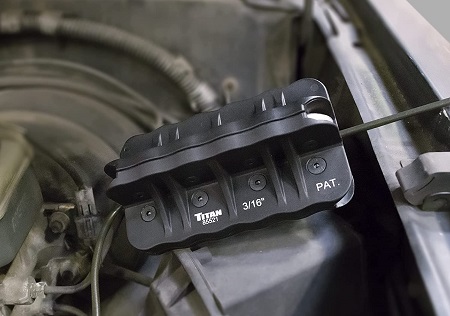
Shop: 3/16" Brake Line Straightening Tool
Shop: 1/4" Brake Line Straightening Tool
*************************
Best Way To Cut Brake Line
A hacksaw or wiz-wheel will work, but a tubing cutter is easiest and most precise. The Ridgid 103 tubing cutter is designed for use in restricted spaces on small ID steel, aluminum, and plastic tubing.
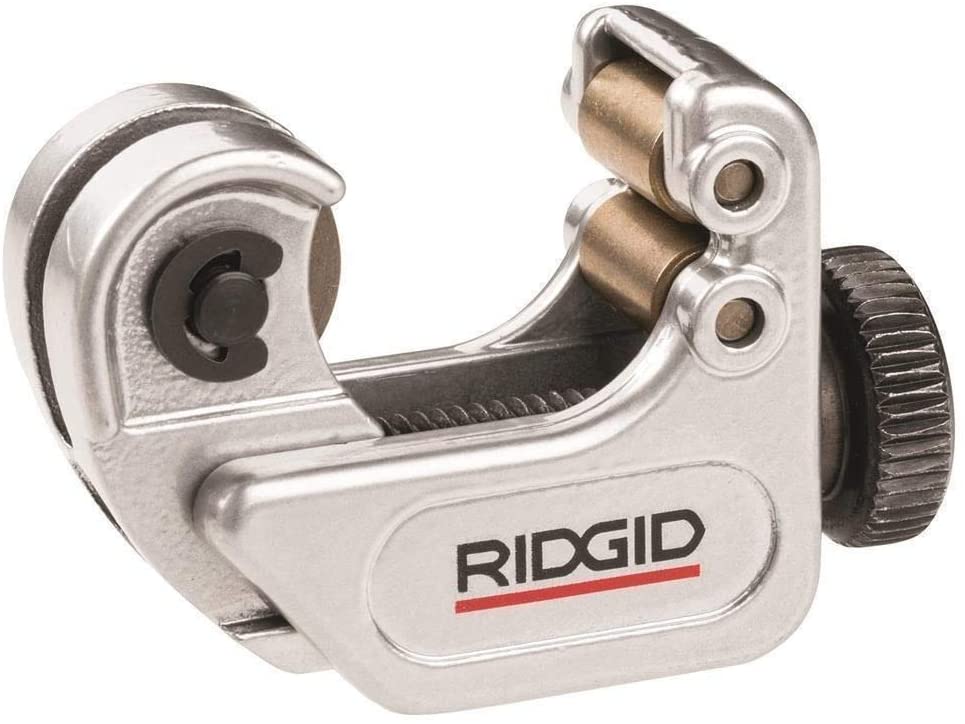
Brake Line Fabrication
Unless your brake lines are completely missing, you can duplicate them very closely to the ones you took off. When you remove the line, try to preserve its original shape.
Next, you need to cut a piece of brake line to size. With a piece of string taped at the bends, measure how long a piece that you'll need. Leave a little extra at both ends to be flared.
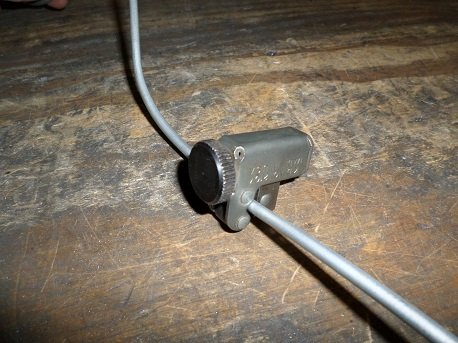
With the cut marked on the tube, set the tube cutter in place and tighten it down snug (do not over-tighten). Spin it once around the brake line, then tighten the knob just a touch. Repeat this until the tube is cut.
De-burr the Cut End
With a file or piece of sandpaper, lightly sand off the the end of the line you just cut. This is to remove the small imperfections known as burrs.
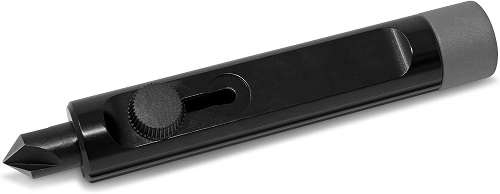
Alternatively, you could buy a deburring tool.
*************************
How To Make A Double Flare Brake Line
Most American-made vehicles use brake lines with a double flare. To make this type of end, the line is flared out, then folded back onto itself. The following procedure was done with 3/16" steel brake line on a wing-nut type flaring tool.
Place the forming bar in the vice and crank it down tightly, so it won't slip. Tighten the wing nut closest to the line first. Then do the nut at the far end. You'll get more leverage and won't need to use a set of pliers to finish the job.
Always fit the line nuts before putting the line in the flaring tool. You don't want to accidentally flare a line without having the nut in place. Also, make sure the nut is facing the right way.
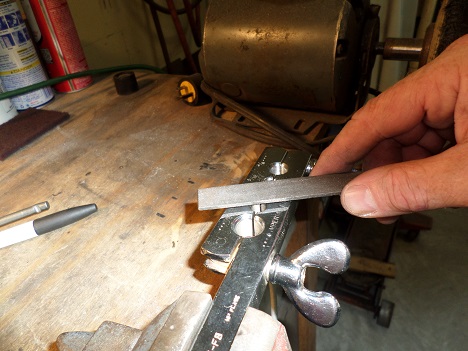
The first step is to set the line into the flaring tool with the appropriate amount of overlay. Make sure the end of the line is clean and smooth. File flat if necessary, and chamfer the edges. These steps help ensure you make the best possible flare.
The black double flare bit specifies how much the stock should stick out from the flaring tool. Clamp the brake line into the base, making it flush with the step on the die.
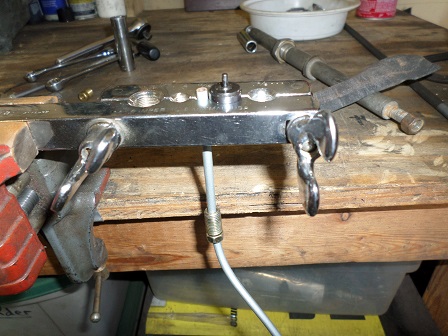
Insert the double flare die into the line with the stub sitting down into the line. This ensures the die doesn't move during the process. Slowly turn the top handle clockwise and watch as the flare forms onto the line. Don’t crank too hard on it or you can damage the flare.
Lubricating the die tip with a little brake fluid helps. Lubricating the threads of the press screw with oil reduces the force needed to turn the screw and tighten the clamping.
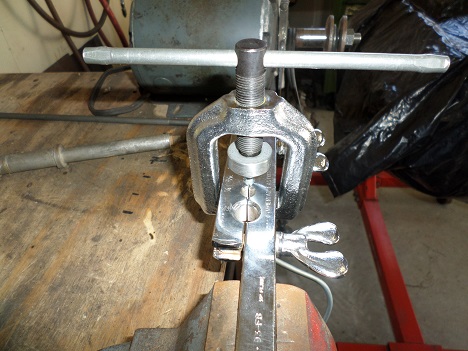
Once the first part of the flare is made, remove the die to finish the double flare. Take the press and tighten it over the flare. With this second flare completed, the double flaring process is complete. Remove the flared line from the flaring tool.
Use a flare nut wrench (also called a line wrench), to minimize damage to the nut when tightening. You may have to adjust the line slightly before final tightening.
Be careful when bending steel brake line, it may kink if bent by hand. Best to use a tubing bender or large socket to make any curves. Always take a gradual, smooth approach while bending.
*************************
Tools and Supplies Needed for Brake Line Fabrication
- Steel brake line with correct fittings
- Tubing cutter
- Brake Line Flaring Tool
- Brake Line Bending Tool
- Small fine-thread file
*************************
Leaking Brake Fittings
Brake lines and fittings require only a flared surface to seal. If your new line is leaking, check that the brake line fitting is the right one and that the flare is not cracked or deformed.
There's plenty of hydraulic sealants on the market, but only one is advertised to safely work with brake systems. Permatex 54540 seals any metal thread and will not contaminate brake fluid.
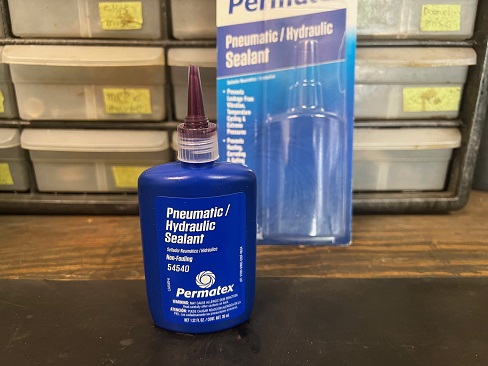
Read: Best Thread Sealant For Brake Fittings
A small dab of thread sealer on the fitting is OK, but do not use Teflon tape on brake line fittings. Teflon tape is for pipe threads, not for flared fittings.
*************************
Tips For Repairing Steel Brake Lines
If you are looking to repair an existing brake line, don't be tempted to use a compression fitting to splice the line together. Not only is it dangerous, it's also illegal (will not pass a safety inspection).
Replace the longest brake lines first. This way, if you mess up a flare, you can cut the line and use it somewhere else.
When buying a steel brake line, get one that is at least as long as you need; you can cut off one end, flare the other end to size, and still have a piece left over. Getting a good flare with simple tools requires practice and knowing what to look for. Practice making a few on smaller scrap pieces before attempting the actual repair.
If the line you need measures exactly one of the available sizes you can save yourself a little work, but chances are the pre-made lines will be too long or too short.
*************************
There are two other tools to fabricate brake lines:
Leveraged Manual Flaring Tool
A leveraged manual flaring tool uses dies and a swing-arm to press the flares into the line. Although these are quicker and easier to use than a wing-nut type, they cost much more.
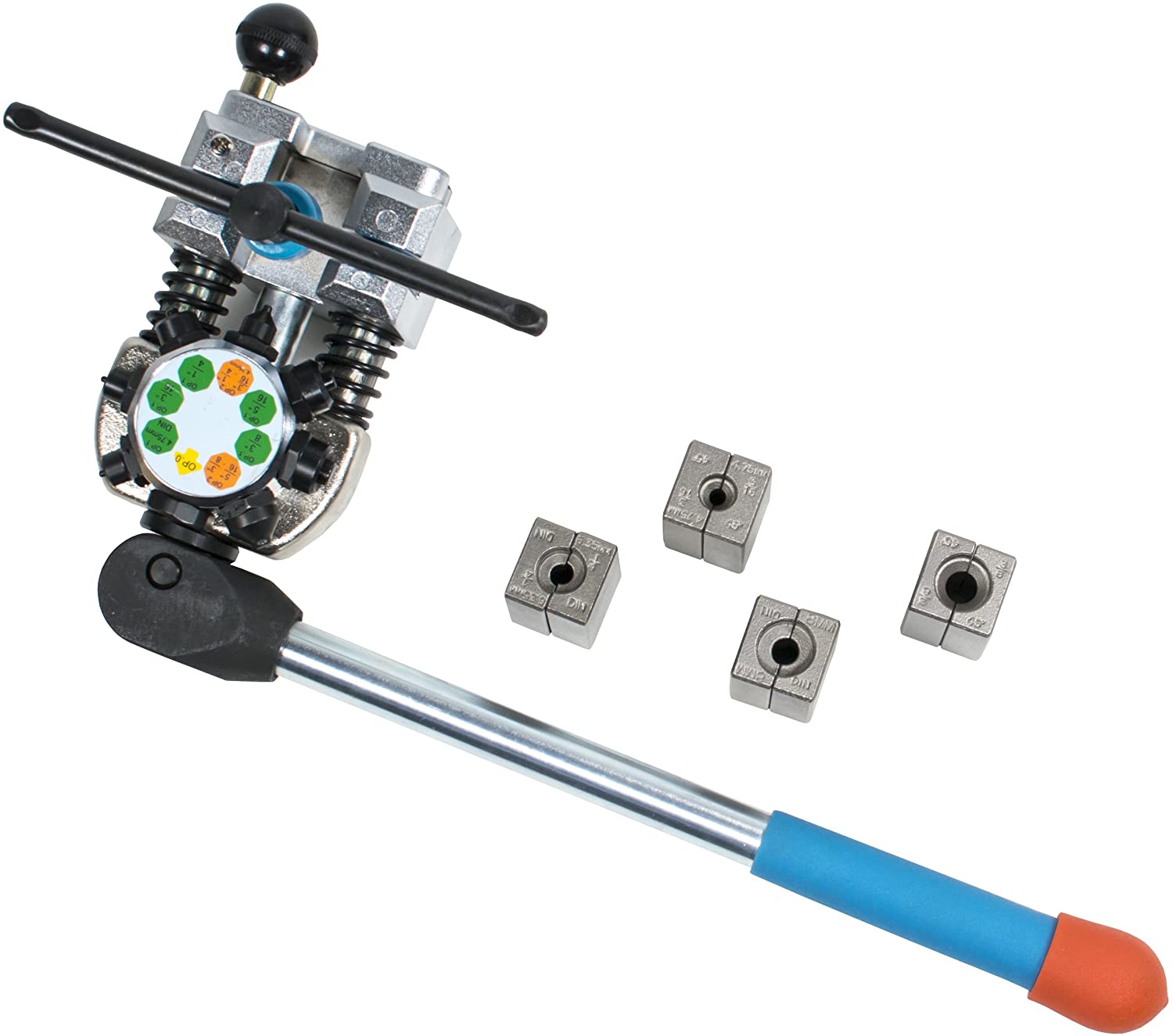
The TGR Brake Line Flaring Tool makes 45 degree flares in single, double, and bubble flares. They also offer a tool that can produce both 45 and 37 degree flares.
If you need to make many brake lines, such as when restoring an old car, a leveraged manual flaring tool may be worth the money.
Hydraulic Flaring Tool
There is also a hydraulically-operated flaring tool, which saves time and effort from a leveraged manual flaring tool. Instead of using a turn-screw to flare the tubing, it uses hydraulic pressure, which is faster and requires less hand strength. Hydraulically-operated flaring tools sell for about $350 and up.
*************************
Conclusion
All of the different types of flaring tools available will produce the same result. The more expensive hydraulic tools clamp the line in a way that avoids marking it. If you don't like the shiny tooling marks left from the wing-nut style double flaring tool, you can wire-brush the raised metal on the sides of the line. Just be sure not to remove too much metal.
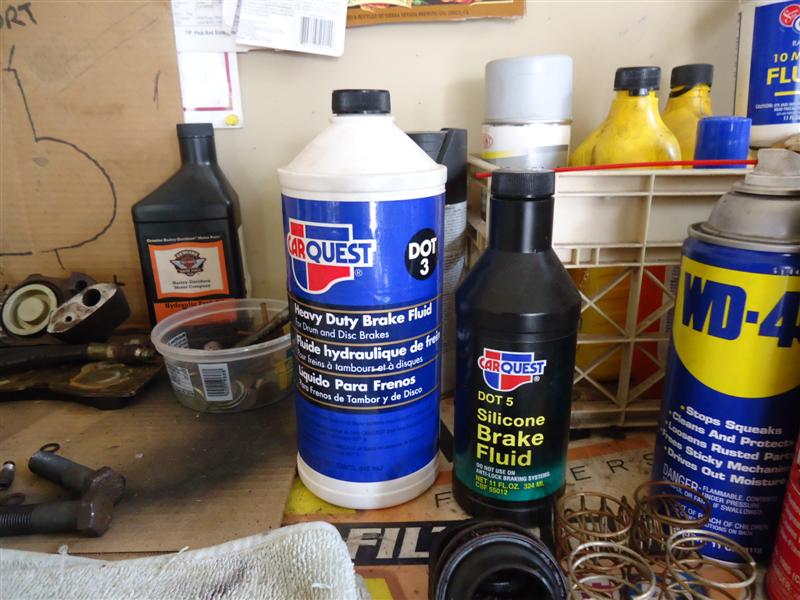
Read: Best Brake Fluid For Classic Cars
